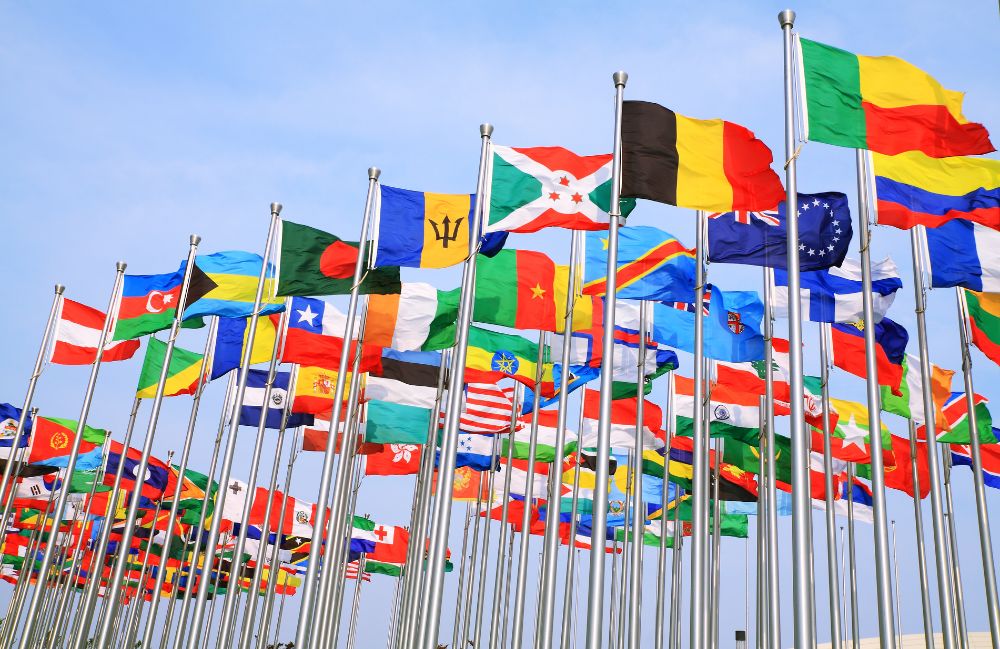Tomorrow.io’s path ahead reveals new capabilities to manage climate threats globally.
Snapshot:
- Tomorrow.io CEO Shimon Elkabetz unveiled advancements in weather prediction at ClimaCon4.
- Tomorrow.io is leveraging space-based radars and advanced modeling to provide life-saving weather intelligence.
- The company’s three pillars of innovation are data, models, and software.
- How Tomorrow.io is using generative AI to automate insights and recommendations for customers.
- The introduction of the One Forecast system accounts for multiple models to provide probabilistic forecast scenarios.
As weather and climate continue to get more volatile, weather intelligence companies are leading the way in forecasting advancements for businesses, governments, and countries.
At our fourth annual ClimaCon conference, Tomorrow.io CEO Shimon Elkabetz unveiled several significant advancements that will revolutionize early warning systems and weather prediction globally.
Check out the highlights from his opening keynote, where Elkabetz explained how Tomorrow.io is leveraging space-based radars and advanced modeling and software to provide life-saving weather intelligence to countries and organizations managing climate risk.
Innovating on Three Pillars: Data, Models, Software
Elkabetz began by reflecting on Tomorrow.io’s founding mission in 2016 – to help countries and businesses manage growing weather and climate risks.
“We had to go and innovate on three pillars: data, models, and software that will show you some results from the last year of innovation around our models.”
Tomorrow.io has established itself as an industry leader in weather forecasting by innovating across data, models, and software.
Elkabetz tells the audience, “Today’s updates will be around our NextGen global forecasting capabilities, satellites — all exciting updates. So let’s start with the NextGen global forecasting, that is built of observations, deep modeling with generative AI, and the weather intelligence piece.”
Harnessing the Power of Generative AI
One critical update Elkabetz provided was on Tomorrow.io’s use of generative AI to enhance its forecast models.
He shared: “Now, the first way we started to leverage generative AI, was via the platform. It’s quite simple. Eventually, think about the way organizations manage their challenge until, actually, today, most organizations still do that. People hire meteorologists on staff, which is great. And you have to do that just like every company has security analysts, right?”
By leveraging generative AI, Tomorrow.io can now automate client insights and recommendations, acting as a an AI assistant meteorologist.
As Elkabetz described, this includes “An architecture. We basically, on the left side, you can see sources of data, not necessarily proprietary, that we collect, but collecting data from global agencies in Latin Africa. Middle East, not just Western Catherine. It’s a difficult task. It took us a few good years to do that data collection.”
Validating Leading Forecast Improvements
Elkabetz also provided critical model validation results, showing Tomorrow.io’s improvements over leading government models like NOAA’s HRRR and the European Centre’s ECMWF model:
“What you see here is, how we outperform the leading US models in this case, the, HRRR model, which is a regional model that is running only to continental US. It’s a three kilometers model, and you can see on average the improvement rate from thirty percent to more than forty percent.”
He added: “We also looked at the ECMWF model, which is the European model, which is considered to be, the best performing global model. And even when you look at that model, you can see the range of improvement from twenty six percent for some parameters all the way to sixty percent improvement, and that’s significant.”
Introducing 1F: Tomorrow.i’os Proprietary Forecast for Decision Confidence
A major innovation Elkabetz introduced was Tomorrow.io’s new One Forecast system, which accounts for multiple models to provide probabilistic forecast scenarios. As he explained:
“We have a, global, forecasting system, which we call 1 F, 1 Forecast, It basically takes into account several models outputs, not just the tomorrow. Io machine learning and physical models that are provide to us.
We’ll also look at all the available models to make sure that we don’t miss on anything.”
This allows Tomorrow.io to provide forecasts tailored to client’s specific decision making needs at different time ranges. Elkabetz elaborated: “From that place, we, moved on. This is a visual way to look at it, and you can actually see how the further we go in time, the decision confidence is becoming lower and there’s a wider variety of possibilities.”
Expanding Satellite Constellation to Boost Model Performance
Elkabetz also touched on Tomorrow.io’s rapidly growing satellite constellation, which he said is already fueling forecast improvements:
“Now I do wanna say that the results you’re seeing here are with only two satellites of out of twenty-eight in space. So the more satellites we launch these improvement rates will grow dramatically. And, we hope to be able to provide that improvements to everyone in the world. That’s our goal.”
By the end of 2023, Tomorrow.io plans to operate a constellation of 32 satellites to ingest proprietary radar data and enhance weather model performance globally.
The Path Ahead for Tomorrow.io
In closing, Elkabetz reiterated Tomorrow.io’s commitment to spreading life-saving weather insights worldwide through both its commercial business and non-profit arm, TomorrowNow.org:
“That’s we also understood that we don’t necessarily have the capability to do it as commercial arm. That’s why we started TomorrowNow.org to help us spread this capability to everyone who needs it.”
With continued advancements across data, models, and software plus an expanding satellite constellation, Tomorrow.io is poised to push forecasting capabilities to new heights in 2023 and beyond.
Elkabetz’s keynote makes it clear that Tomorrow.io will continue innovating to fulfill its mission of helping the world manage climate threats.
Watch more of ClimaCon4 today to learn more about Tomorrow.io’s revolutionary enhancements.
















